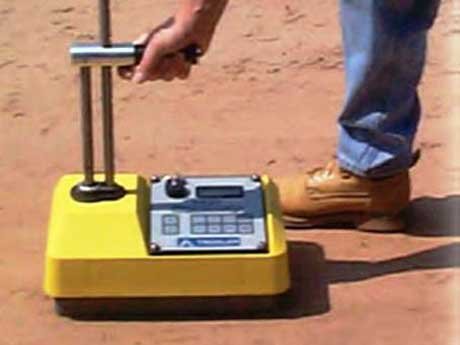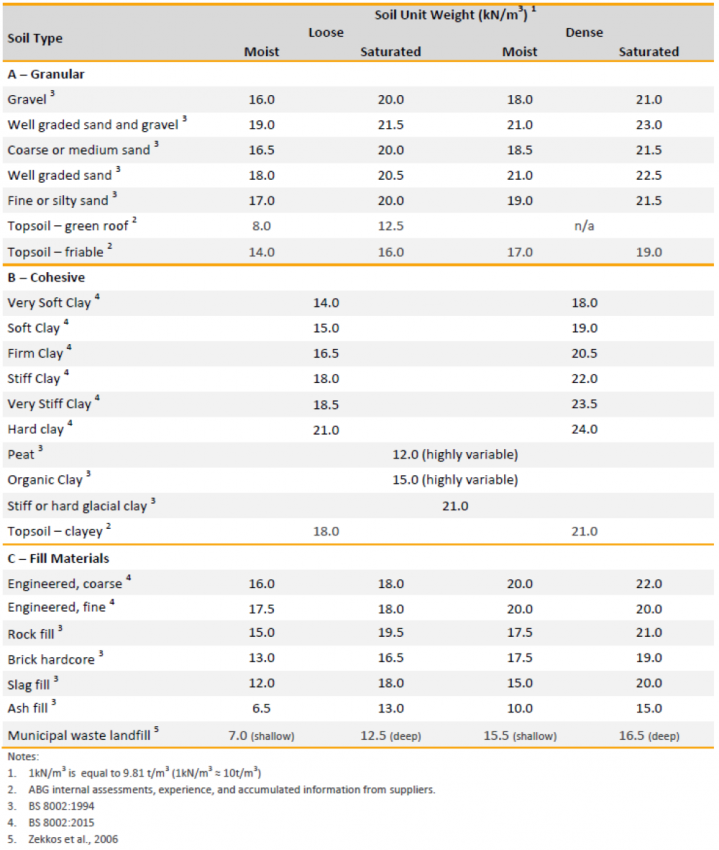Introduction
The unit weight, also known as the ‘weight density’, of a soil refers to its weight per cubic metre and is typically expressed as kilonewtons per cubic metre (kN/m3), or tons per cubic metre (t/m3)1. Knowing the unit weight of a soil is particularly important for geotechnical design, as well as assessing earthworks volumes. This technical note is intended to provide a basis for estimating a soil’s unit weight in the absence of specific testing results.
Factors Affecting Soil Unit Weight
The unit weight of a soil depends on the composition of the soils particles, the amount of water in the soil, and how well compacted the soil is. The contributing factors include, but are not limited to:
- Mineralogy of the soil particles (e.g. silica, quartz, feldspar, etc.).
- The range of sizes of the soil particles, also known as the particle size distribution.
- The angularity of the soil particles (most relevant to coarse sands and gravels).
- The moisture content of the soil – whether the voids between the soil particles are completely filled with water (fully saturated) or mostly air.
- Organic content of the soil.
Measuring Soil Unit Weight
In theory this is as simple as measuring a soil’s volume then weighing it. In practice it can be more difficult because as soon as you extract a sample of soil it may collapse, expand, change moisture content or vary in a variety of other ways. If a sample is carefully removed from site and transported to a laboratory, the density can be measured using the methods described in Chapter 7 of BS 1377-2:1990.
Determining the density of soils in-situ can be achieved using methods described in Chapter 2 of BS 1377-9:1990. One of the more common methods used on site is the nuclear density gauge (see Figure 1).

Figure 1: Nuclear density gauge
Typical Soil Unit Weights
Several studies have attempted to assess a typical unit weight for a given soil type and ABG typically uses the information in BS 8002, as well as other sources, and values accumulated in over 30 years of operation. This information has been combined into Table 1, below.
Table 1: Typical Soil Unit Weights

References
British Standards Institution, BS 1377-2:1990 – Methods of test for soils for civil engineering purposes. Classification tests
British Standards Institution, BS 1377-9:1990 – Methods of test for soils for civil engineering purposes. In-situ tests
British Standards Institution, BS 8002:1994 – Code of Practice for Earth Retaining Structures
British Standards Institution, BS 8002:2015 – Code of Practice for Earth Retaining Structures
Zekkos, D., Bray, J., Kavazanjian, E., Matasovic, N., Rathje, E., Riemer, M., & Stokoe, K. (2006) Unit Weight of Municipal Solid Waste. Journal of Geotechnical and Geoenvironmental Engineering, 132(10), 1250-1261. doi: 10.1061/(asce)1090-0241(2006)132:10(1250)